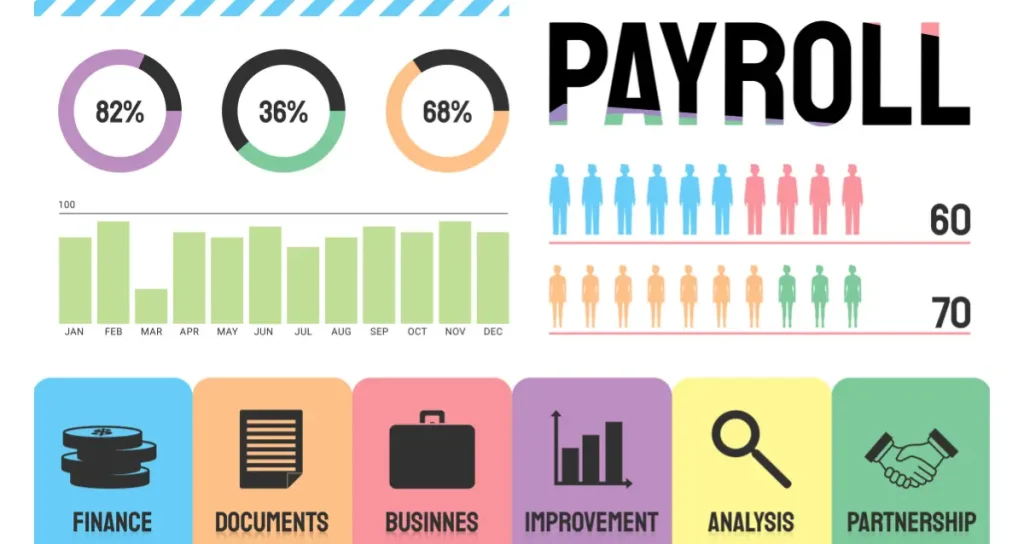
In today’s fast-paced business environment, selecting the right payroll software is crucial for small businesses looking to streamline operations and boost efficiency. Payroll systems are not merely tools for calculating salaries; they encompass comprehensive solutions that tackle compliance, tax filings, and employee management. Focusing on solutions catering to small business needs is vital with the myriad options available. Understanding the features and benefits of various systems will aid in making an informed decision. Choosing one that enhances functionality while maintaining simplicity is vital among the top payroll providers. These systems can save time and resources, allowing business owners to focus on growth and strategy.
This guide will delve into the essential features you should look for, how to compare different software solutions, and best practices for implementation. Furthermore, we’ll explore common challenges, the dynamic future of payroll solutions, and success stories that illustrate the transformative power of such tools. This comprehensive overview will empower you to make informed decisions, ensuring that your choice aligns perfectly with your company’s goals and operational frameworks.
The Importance of Payroll Software for Small Businesses
Payroll software is indispensable for small businesses aiming to maintain accuracy in employee payments, adhere to compliance standards, and save time. By automating processes, businesses can reduce errors and ensure employees are paid correctly and on time, contributing to greater staff satisfaction and less turnover. Moreover, these systems provide valuable data insights that guide budgeting and forecasting decisions. Small businesses can avoid costly penalties by ensuring compliance with ever-changing tax laws and labor regulations, thus safeguarding their financial health. Furthermore, streamlined payroll processes free up valuable time for business owners to focus on strategic initiatives and growth opportunities rather than being bogged down in administrative tasks.
Many payroll software solutions also integrate with accounting and HR platforms, seamlessly managing various aspects of business operations. Features like automatic tax filing and direct deposit enhance efficiency and improve employee experience. Customizable reporting tools enable small business owners to track labor costs and identify trends that can inform workforce planning. Cloud-based payroll software ensures accessibility from anywhere, offering flexibility for business owners who manage operations remotely. Investing in reliable payroll software ultimately supports scalability, making it easier for small businesses to adapt as they grow and their workforce expands.
Essential Features to Look For
Choosing payroll software requires a clear understanding of essential features. Automation of repetitive tasks, integration with existing systems, and an intuitive user interface top the list. Businesses should also consider software that provides comprehensive reporting tools, ensuring insights into financial health are easily accessible. Additionally, the ability to scale with your business as it grows is imperative; this ensures that the software remains relevant and avoids the pitfalls of transitioning to a new system prematurely. Security features protecting sensitive employee data also can’t be overlooked, alongside mobile accessibility, which caters to today’s increasingly remote workforce. Ensuring the payroll system integrates with accounting software and HR systems can further streamline business operations.

Comparing Software Solutions
When evaluating payroll solutions, consider cost, scalability, ease of use, and customer support. It’s beneficial to read user reviews and seek out industry benchmarks. Budget constraints are a significant consideration for many small businesses; hence, balancing costs and features is crucial. Being scalable, a software solution should adapt to the business’s growth trajectory, offering features that grow in complexity as your needs evolve. Customer support is another vital aspect, ensuring issues are resolved promptly and minimizing disruptions to your payroll operations. Lastly, user-friendliness in interface design can significantly impact productivity, reducing the learning curve for new users and enhancing overall efficiency.
Implementation Best Practices
Successful implementation of payroll software is integral to its effectiveness. Start with thorough training for your staff, and ensure adequate support is in place. Employ change management strategies to facilitate a smooth transition and ensure everyone is on board with the new system. This begins with clear communication about the new system’s benefits and ongoing support during the integration phase. Engage key stakeholders early in the transition process and solicit feedback to address concerns. Regular follow-up training sessions can also help staff stay updated on any new features or functionalities introduced over time.
Common Challenges and Solutions
Adopting new payroll software is challenging. Common issues include data migration troubles or initial resistance from staff. Address these by planning a phased rollout, allowing time for testing and resolving any problems that arise. Regular maintenance can help in mitigating ongoing technical challenges. Creating a dedicated team to monitor the progress of the implementation can also prove beneficial. Additionally, using predictive analytics within payroll services can help foresee and avert potential errors before they arise, ensuring smoother operations. Open communication channels for staff inquiries can ensure challenges are addressed promptly, minimizing disruptions.
The Future of Payroll Software
The future of payroll software looks promising, with trends leaning towards AI integrations, mobile accessibility, and enhanced predictive analytics. These advancements offer exciting possibilities for small businesses and potentially transform operations. AI can predict payroll issues before they occur, enabling proactive management. Mobile access provides flexibility for business owners and employees, ensuring crucial operations can continue even when away from the office.
Conclusion: Making the Right Choice
In conclusion, choosing the right payroll software requires careful consideration of features and business needs. A tailored approach, focusing on scalability and usability, will prove beneficial. Investing in the right payroll solution streamlines your processes and positions your business for sustainable growth in a competitive market. By minimizing administrative burdens and maximizing operational efficiency, your business can benefit significantly in immediate and long-term productivity. The right software meets your current needs and anticipates future challenges, allowing your business to remain agile and responsive in an ever-evolving economic landscape.
FURTHER READING









